The delay starts to accumulate… Anyway, let’s continue our adventure where we left it. After the loop of Thakhek, we take the road, or rather the bus, to the 4 000 islands, before coming back to Vientiane, the capital city, for our last days in Lao. We take you with us!
On Si Phan Don, to the Lao-Cambodian border
We cannot say if there are really 4 000 islands in the South of Lao, but one thing is sure, there are many. And every square meter of land surrounded by water is considered to be an island. So maybe, we come indeed to 4,000. Three main islands are the delight of tourists in search of “chill & relax”: Don Det (the most festive), Don Khon (the quieter) and Don Khong (the even quieter). We make our choice on Don Khon and hope, as these two doggies, we will find a small corner of shadow along the Mekong river to rest.
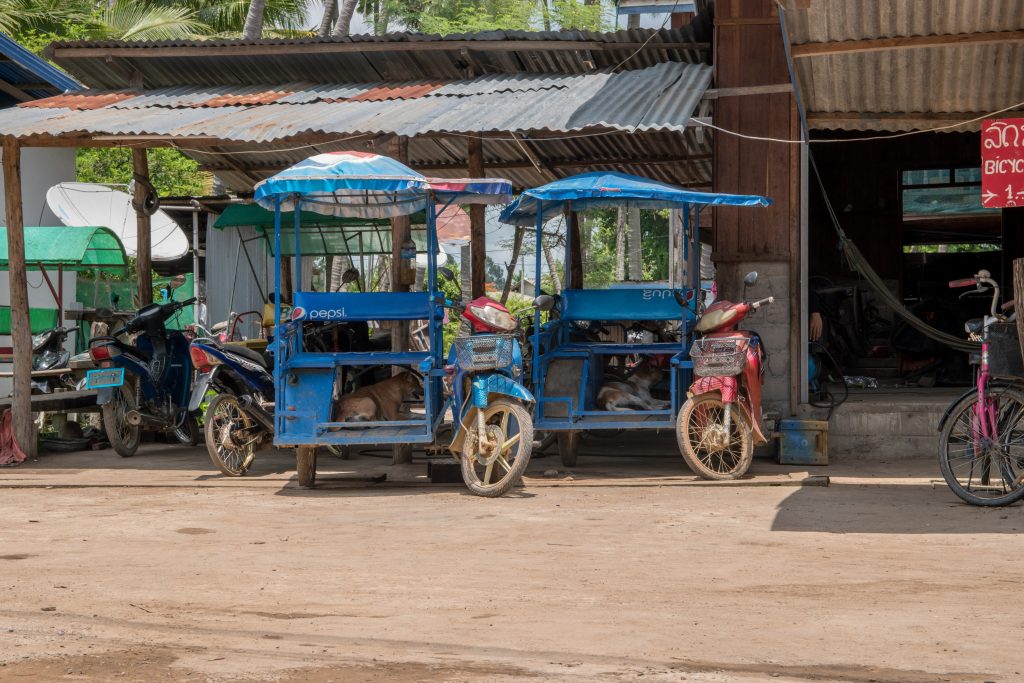
The largest waterfalls in Southeast Asia
High season being over, there is almost no one on the island, which suits us very well :). The island is ideal for cycling between two naps in our hammock. We get on our great bicycles with damper for butts (#joke) and to the main attraction here: Li Phi, the largest waterfall in Southeast Asia (just that!).
And although we have to pay to see these, they are indeed impressive. The Mekong River widens at this place and goes down several trays (20 meters) before arriving in a large plain, which marks the border with Cambodia. There is an enormous current and torrents of water pours down on the rocks. What a beautiful sight!
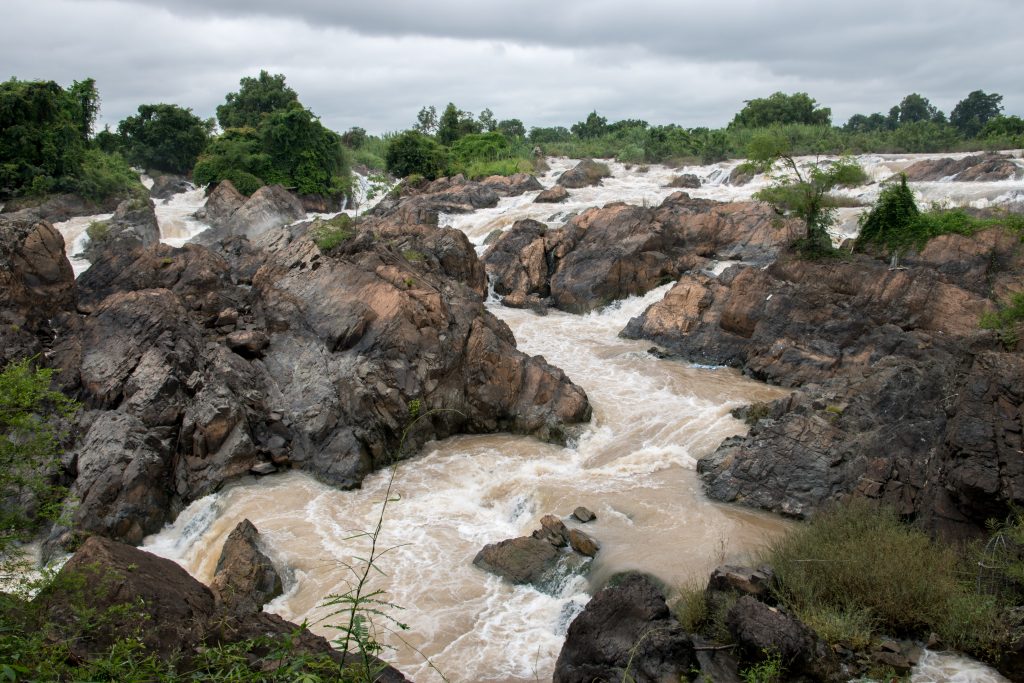
*Culture time* Lao does not have the railway yet. And yet, as we ride on the island, we discover an old locomotive. We learn later that it actually remains from the colonial period. The French were navigating up on the Mekong river by boat from Cambodia. However the waterfall prevented them to go further up in Lao. That’s why they imported the railroad on the island, in order to make the goods and ships reach the North of Don Det and then put them back into the water, once the falls passed. Smart! It’s a pity that they have not developed the train in the rest of the country… *End of culture time*.
Meeting with the freshwater dolphins
We continued our road to the pier in the South of the island, which allows us to see Cambodia across the river and search for the mysterious freshwater dolphins named Irrawaddy dolphins. We grouped with another tourist to rent a small boat to go to see these dolphins. It seems that we have little chance to see these dolphins, because there is less and less. Well we must be lucky, because we have not seen only one, nor two, but three dolphins! They were playing quietly in the middle of the currents, probably in a great fishing spot! We apologize for the photos that do not show anything because we stood far from the animals in order not to scare them. But the show is really friendly and we’re like children for 20 minutes on our little boat in the middle of the water.
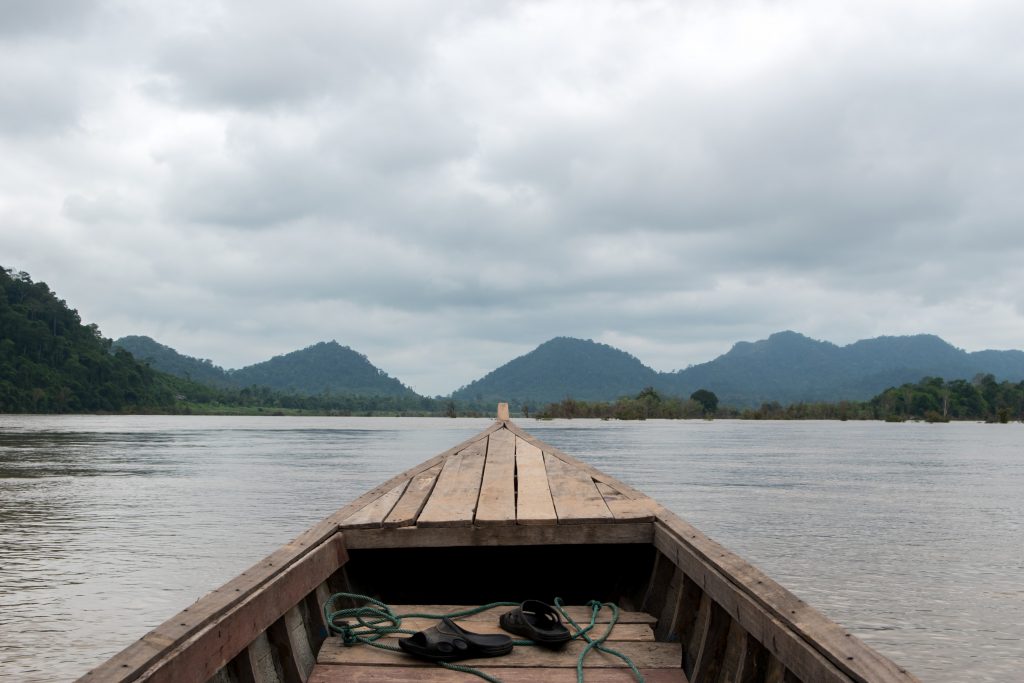
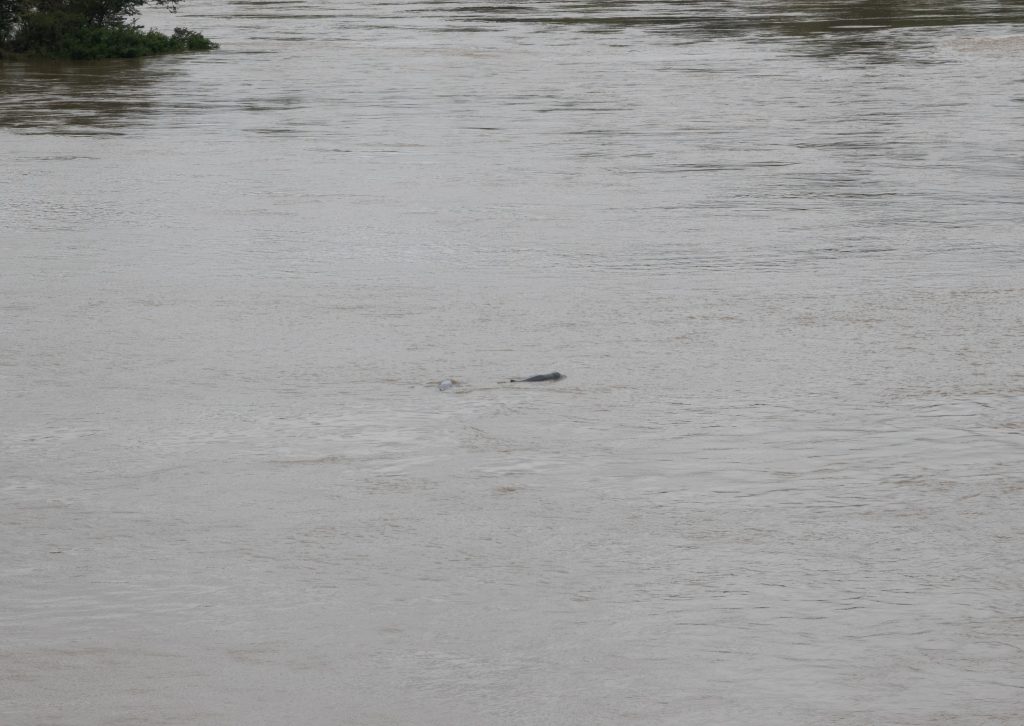
Because it starts to be really warm now, we decide to go back to the village to get lunch and rest. Yes, do not overdo! 😉
Our stay on the island is the opportunity to see Laure-Elise and Maxim, the french couple we had crossed in Muong Ngoi in the North. They also spend a few days, chilling on the island before attempting the crossing in Cambodia by road (one of the most corrupted borders of Lao). We share a few Beer Lao watching the sunset and eat a succulent Laap in a small restaurant run by an french expat’ from Bordeaux who married a Lao lady. What a good life!

Indiana Jones mode on the suspended bridge
Do not think that we don’t do anything else during our stay! The next day, we take our legs and go to the other side of the island by the North this time. We go through lots of small traditional villages before arriving on the suspended bridge of Khone Pa Soy and other waterfalls. There, we can see some fishermen trying to install bamboo traps and nets directly over the falls. Convenient to catch fish more easily! And as we must not overdo, we come quietly back to our little bungalow, after going through a Buddhist temple.
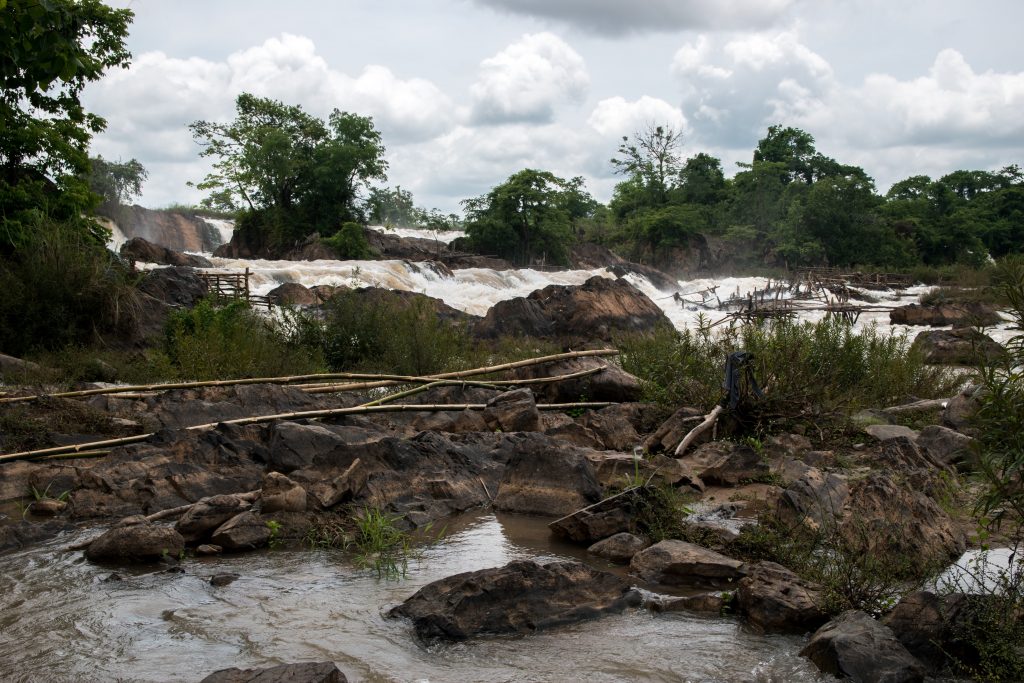
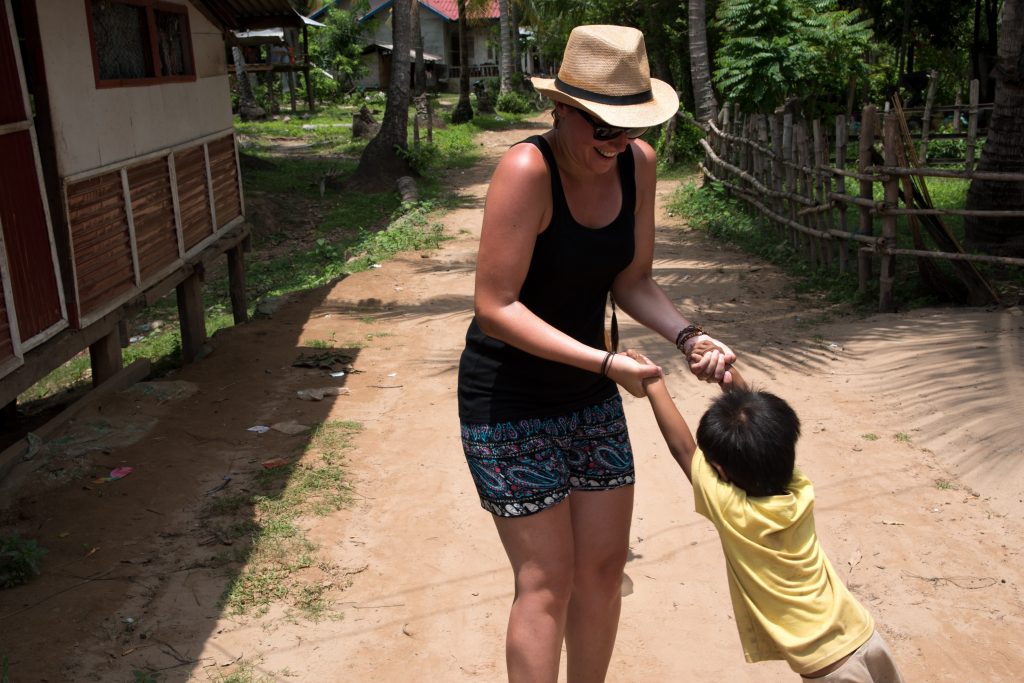
Stopover in Pakse in Champasak province
After these few days of total relaxation, now is the time to go back in the direction of the capital city, Vientiane, since we will soon have to say goodbye to Lao. We say that it may be worth to make a stop in Pakse, not to make the loop by motorbike because we already did the one of Thakhek, but rather in order to explore a UNESCO world heritage site, in the province of Champasak.
The khmer temple of Wat Phou
We rent a new motorbike to explore the temple of the mountain: the Wat Phou. The mountain on which rests the complex is said to be sacred because of its shape, associated with Shiva God. Great, let’s go exploring!
We are not in the temples of Angkor obviously. The site here is much smaller. But it is no less interesting. Nestled on the mountain, you have to walk through a long alley, today attended by cows that can graze peacefully (they also have a hard life). Then, you climb a serie of steps in the shadow of the trees and you finally get to the sanctuary. And there, you stand speechless in front of the landscape that is offered to you. 🙂
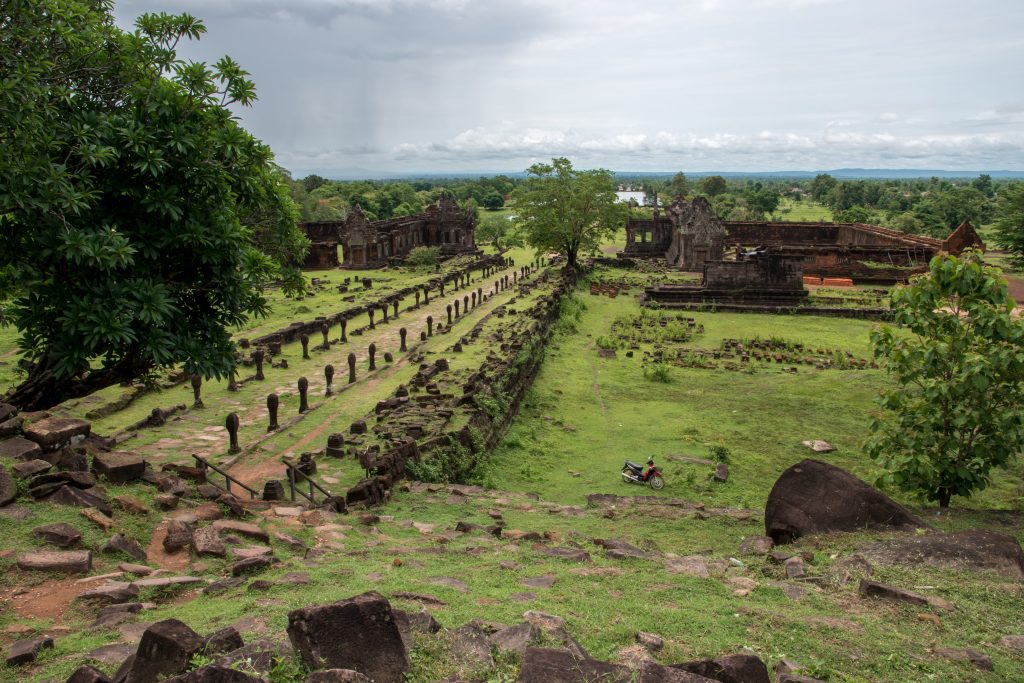



It is interesting to go on the sides in order to discover the rest of the complex. Our exploration stops when our path meets a huge snake. We were heading to a place which name contained the word “snake”. It should have given us a clue… So we turn back and walk in the middle of the temples, more or less well preserved and restored.
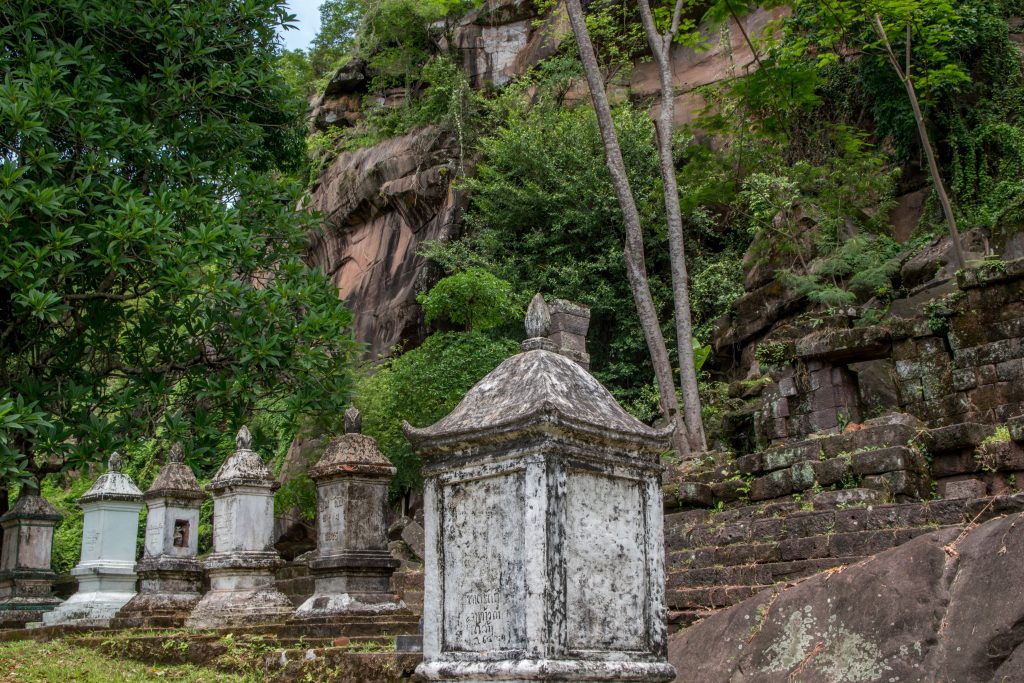
The Museum at the exit enlightens us a bit more about the history of the site, the holy mountain and the architecture that was in place in the 12th century.
Walk around Pakse
We were warned that there is not much to do in Pakse, except the loop by motorbike. So, we know that we won’t stay very long, but we still want to explore a little while we’re on the bike. So we make a stop on the way back, at the large Golden Buddha which overlooks the city (another one!).
After missing the entry, we finally find the road that arrives just at the foot of a Buddhist temple and this huge statue. The site is still under construction but already offers a nice view on the city. The Buddha is once again very impressive, as the hidden temple just behind. We take the time to discover and try to understand the religious paintings, which represent, according to us, the 8 steps of the path to enlightenment.
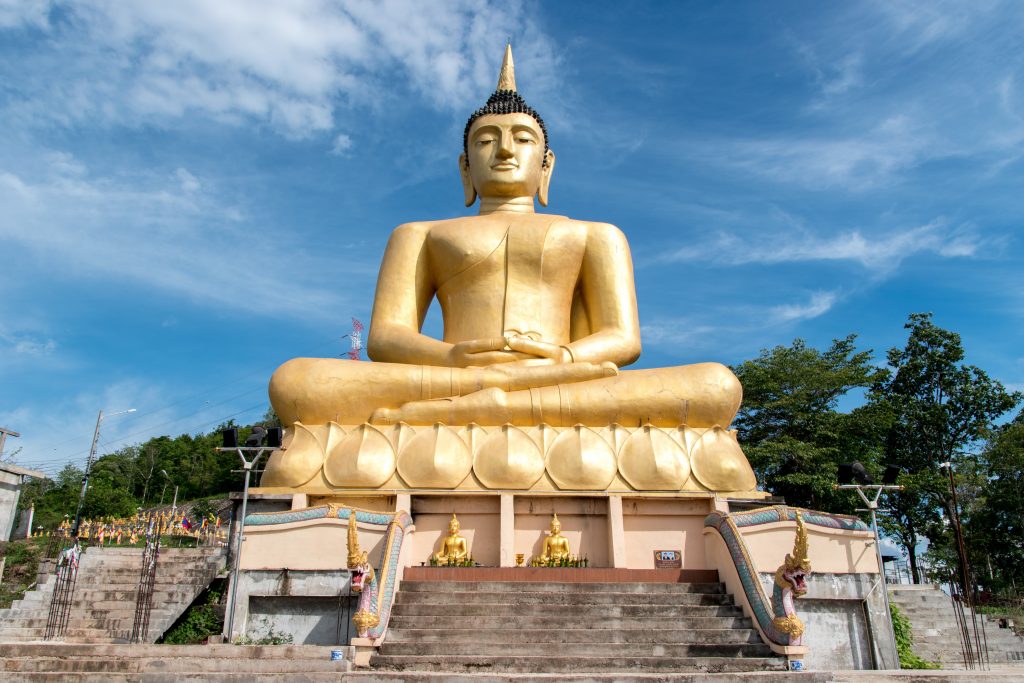
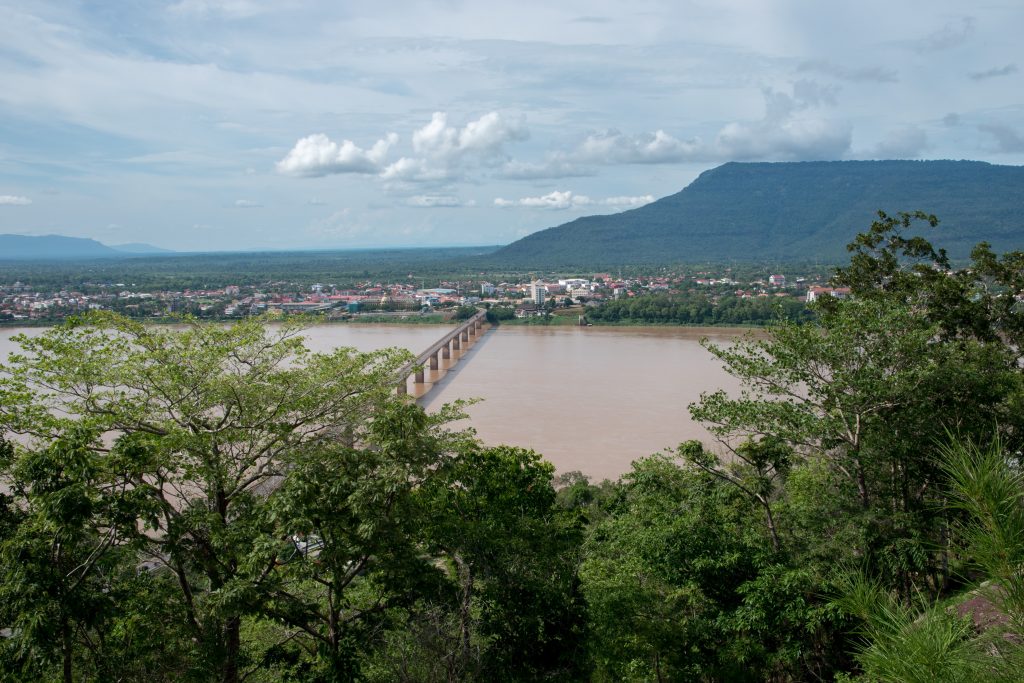

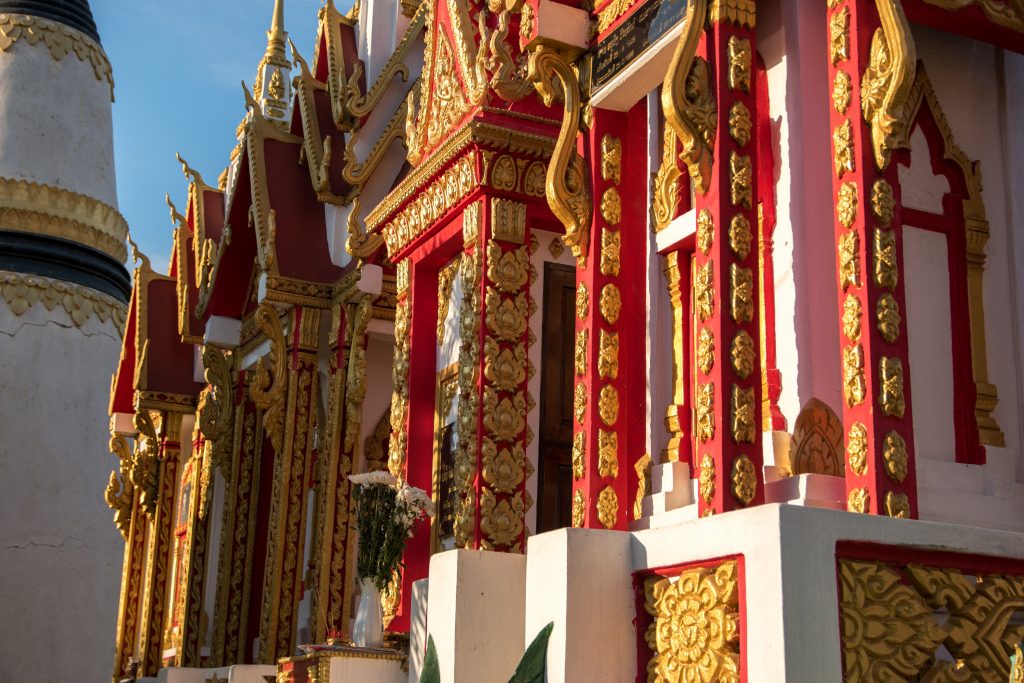
3 days in Vientiane, it is long?
Now we come to the capital city. Vientiane suffers from a bad image with tourists and bloggers that we have read. Of course, this isn’t the most exciting city in the world, but we are quite happy to spend 3 days on-site for us soak up a bit of the atmosphere. It would seem that about 1 000 french expats live here. That’s why we see so many bakeries?
A pilgrimage of temples
There are indeed many temples to discover everywhere in the city. The most well-known? The Pha That Luang, the Lao symbol that can be found on every banknote. This temple with the Golden stupa would house a relic of Buddha.

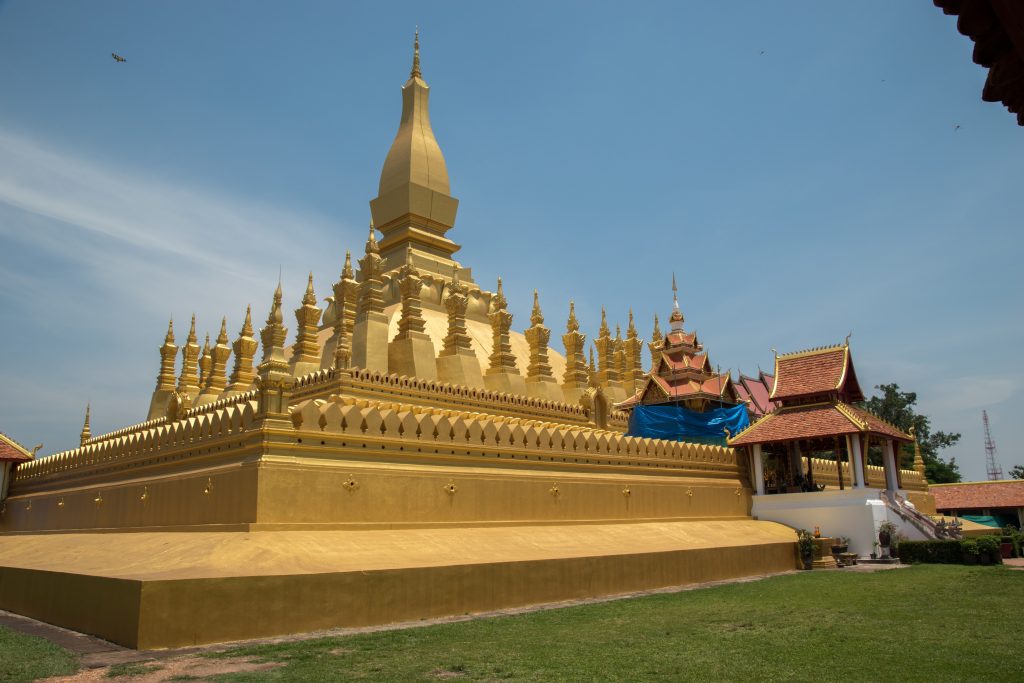
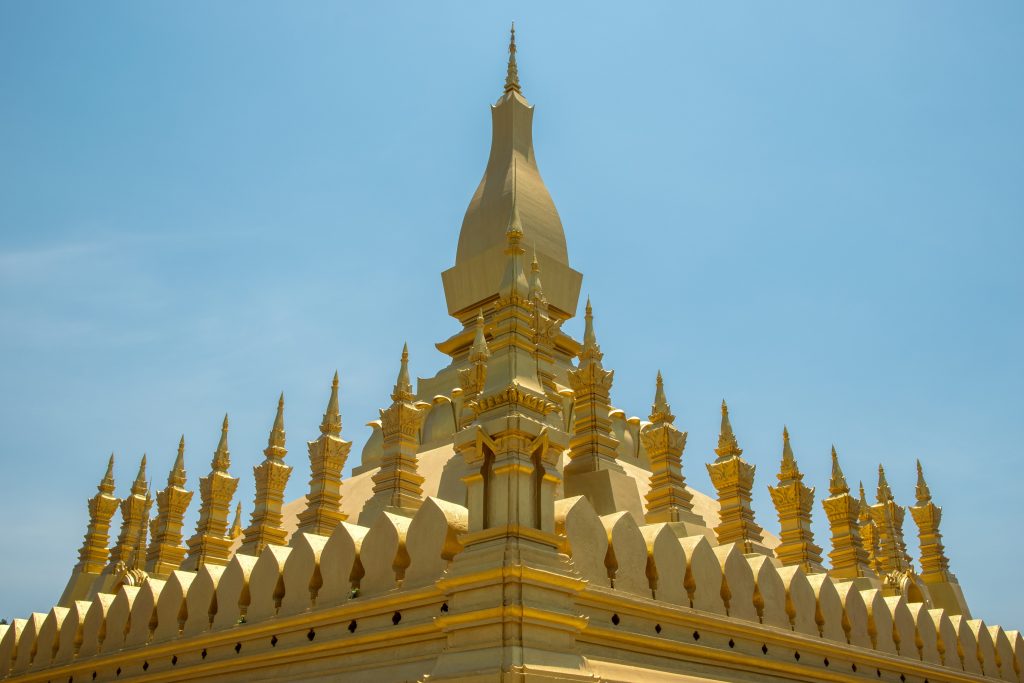
We take this opportunity to also discover the temples of Wat Sisakhet, Wat Phra Keo and Wat Simuong. Sisakhet is the oldest temple in the city, still in operation today. Meanwhile, the Phra Keo is a former royal temple which serves rather as religious Museum now. Finally, the Simuong is the most popular and busiest temple in the city, after That Luang. Even though they look the same, we appreciate the walk in each building.
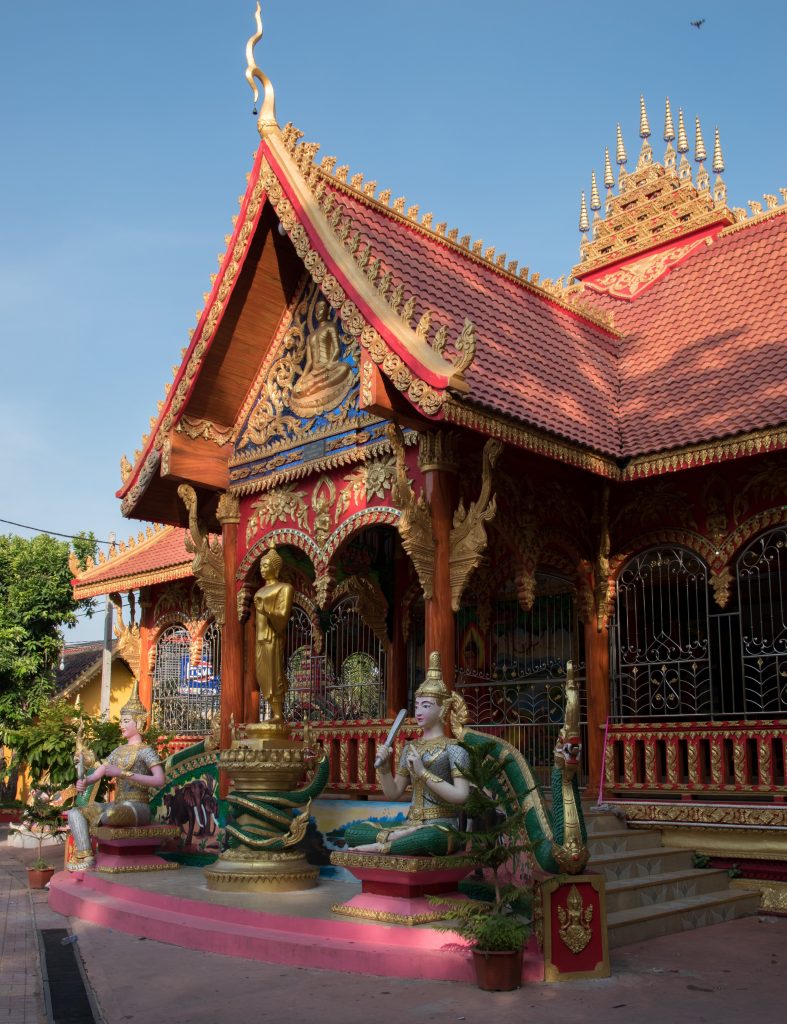


Get high on the Patuxai
Wink at the time of the French colonization, the Patuxai sits proudly on a square in front of the Presidential Palace. Under its false air of Arch of triumph in Paris, he is in fact the “gate of victory”, dedicated to those who fought against the colonists for the independence of Lao. It is possible to climb up on the 3rd floor terrace to have a global view on the city and on the official buildings (Government departments, Presidential Palace, etc.).
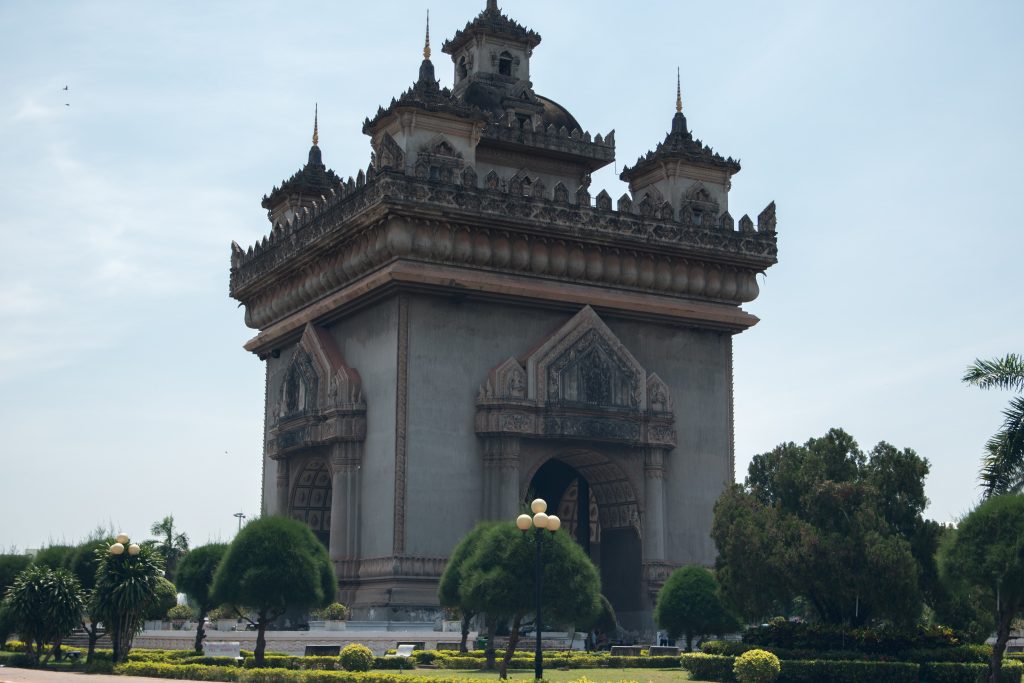
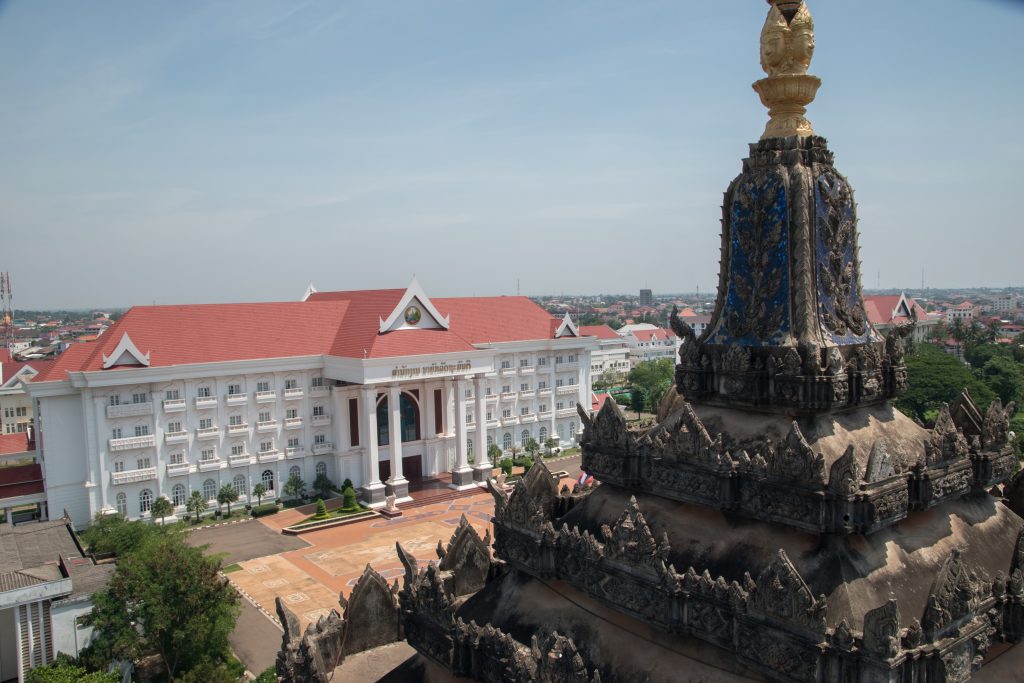
Enjoy the sunset and hang out on the night market
We invite you to find a small 7/11 (these magical supermarkets where you can get everything), buy two Beer Lao and go to the promenade along the Mekong river, to watch the sunset. On one hand, you can enjoy a giant open air Zumba class. On the other hand, you can enjoy a beautiful sunset over the River, and see the shore on the other side, in Thailand, lighting up. It’s a rather nice and very friendly show. Everyone comes here, meeting with family or friends.
All Asian cities have a “night market”, these magical places where you can spend your last coins in souvenirs and trinkets. Vientiane is no exception to the rule. The night market is even rather large and busy, as much by tourists than by residents. At the same time, how can you resist to a pants that costs 20 000 kips (€2.5)?
Finish off to the Buddha Park
The Buddha Park or how to make religion an entertainment park. We’re not yet at the level of Disneyland but still. To get there, simply take a local bus in Vientiane and go 20 kilometers to the South.
The idea was born in the 1950s, in the mind of a yogi-priest/shaman (yes that’s a lot) who likes to mix Buddhism and Hinduism. Therefore, he decides to build about 200 deities, all in concrete. Wasn’t he friend with Le Corbusier?
Today, the complex is operated by the Government, which made it a tourist attraction. You will have therefore an opportunity to walk between strange deities. It’s a pretty nice place if you want that your children dream about humans being swallowed by gods or any other morbid scene. For us, it is above all an opportunity to climb in a pumpkin through the open mouth of a God, and arrive on the roof, at the foot of a tree. WTF? This actually represents the ascent from hell to heaven. In short, it’s a small moment of delirium that makes us feel good.

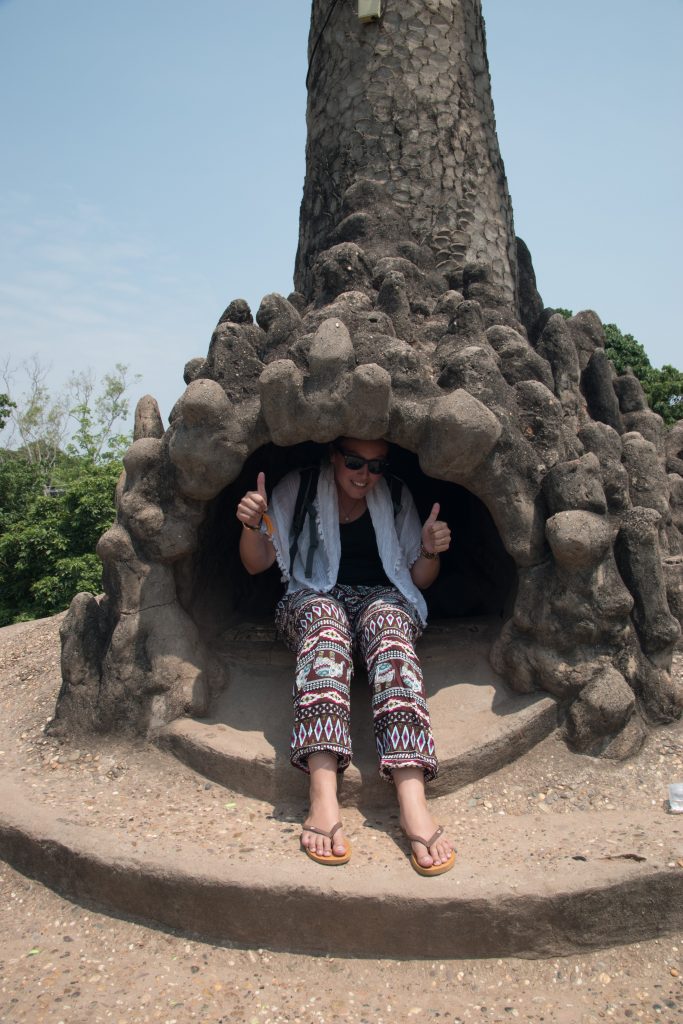
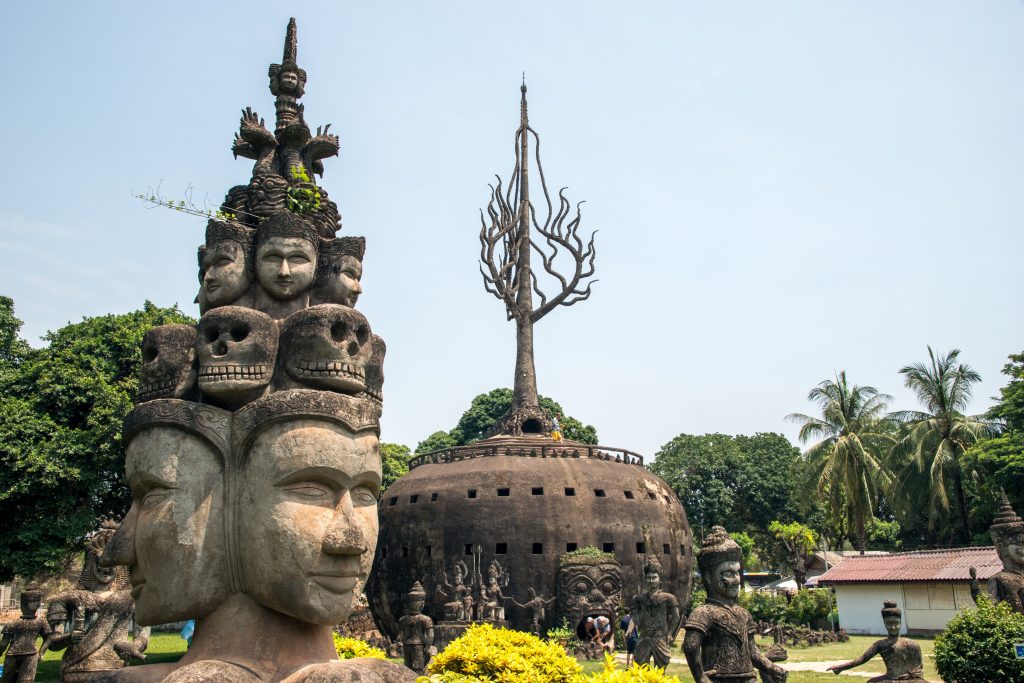
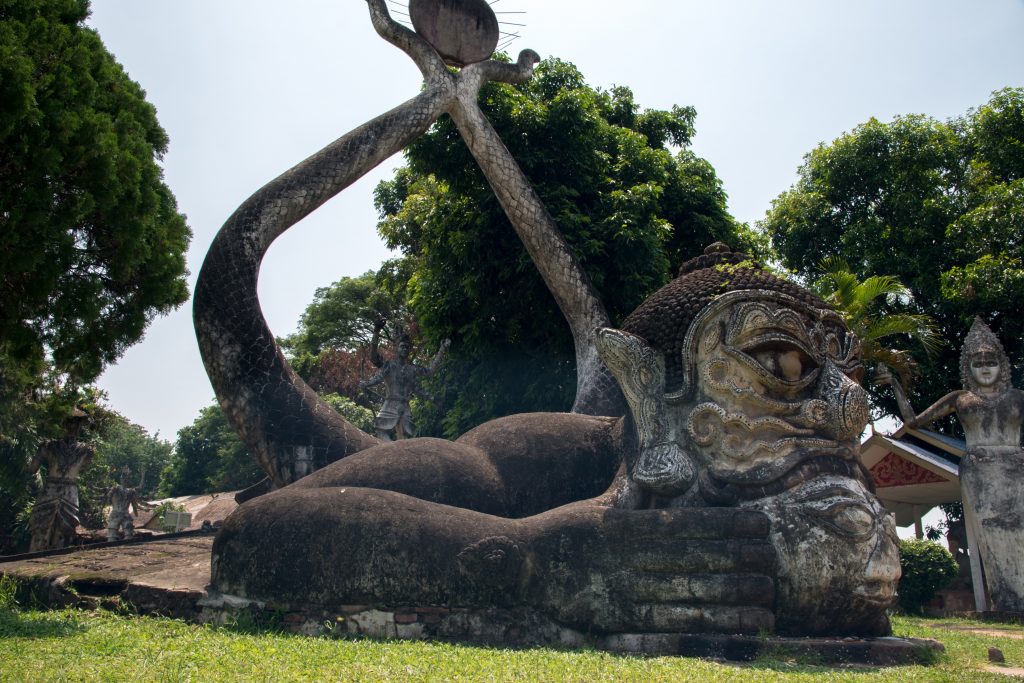
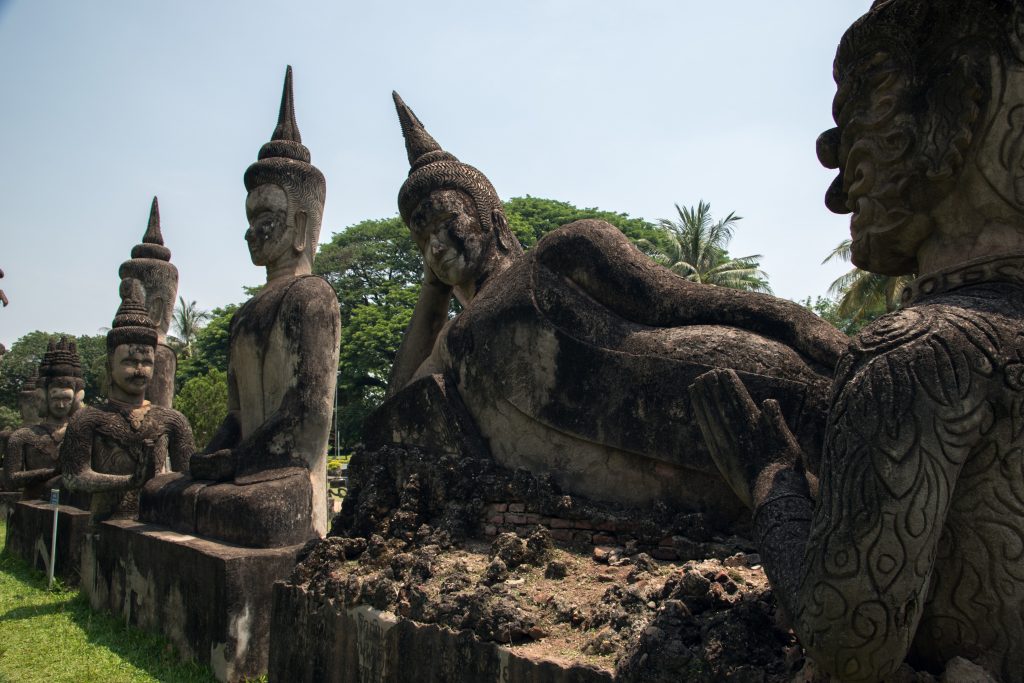
Now we come to the end of our Laotian adventure. One thing is certain, we are not ready to forget this country. It is my favorite until now and I am sure to come again in the North. A new adventure will start in the next article, in Malaysia this time. See you soon! 😉

